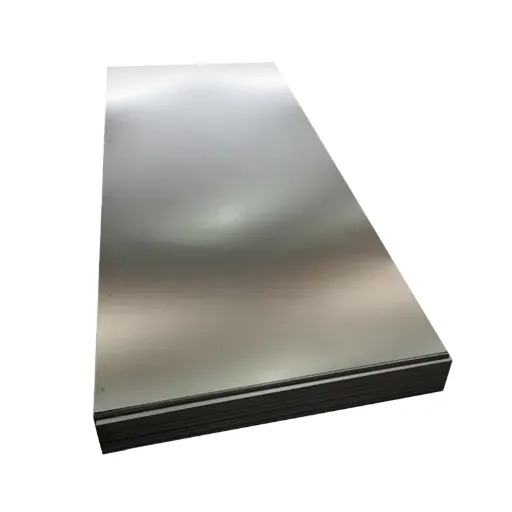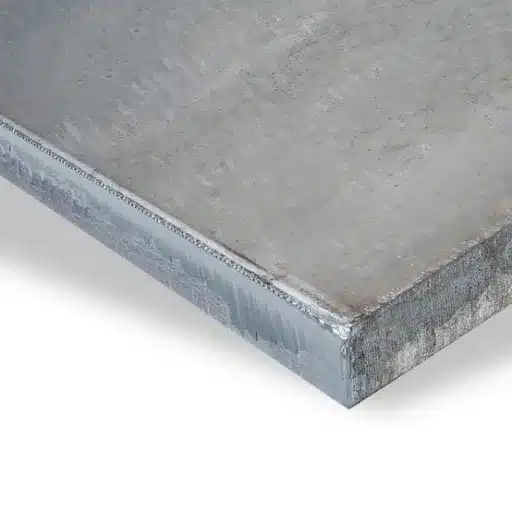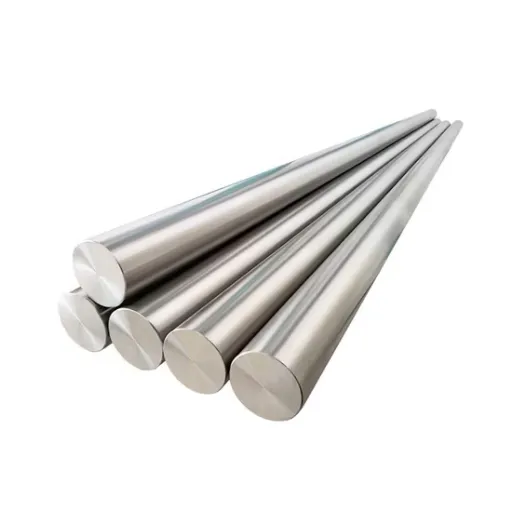If it is the underlying material selection for a particular purpose, it is often the ‘steel vs aluminum’ decision. These two most commonly used materials in different industrial sectors exist and stand out for various reasons. So, among them, which one will suit your needs best? Everyone has different opinions on this issue depending on multiple factors, especially on qualities such as strength, lightness, durability, and economics, to mention but a few. Do not worry, this article will take you through each aspect, looking at steel and aluminum separately. Ultimately, you would have understood why each material had multiple propositions and made some decisions while abandoning the others with assurance and resolve.
What Are the Key Differences Between Steel vs Aluminum?

The steel vs. aluminum comparison below covers several essential differences that make each material preferable based on the nature of the work.
- Mechanical Property: Aluminium is not as strong as steel, so it is preferred for constructions with heavy loading or other high-strength applications.
- Density: Steel weighs considerably more than aluminium. Therefore, aluminium is much more advantageous in applications that require very lightweight structural elements, such as aircraft or auto bodies.
- Performance: Wear deformation is more significant in aluminum, while steel has a much longer life in wear and tear. However, it has to be noted that aluminum does not rust naturally, even when it is submerged in salt water.
- Economics: Steel is often cheaper today and in the most developed regions. However, since steel is heavier than aluminum, less costs are needed for its transportation and usage.
After thoroughly examining the contradictions, one will clearly understand which material is preferable for a specific project.
Understanding the Properties of Steel vs Aluminum
| Property | Steel | Aluminum |
|---|---|---|
| Density | High (7.75–7.89 g/cc) | Low (2.7 g/cc) |
| Strength | High tensile strength | Lower tensile strength |
| Strength-to-Weight | Moderate | Excellent |
| Malleability | Low | High |
| Corrosion Resistance | Low (unless stainless steel) | High |
| Thermal Conductivity | Low | High |
| Electrical Conductivity | Low | High |
| Melting Point | High (~1400°C) | Low (~660°C) |
| Cost | Generally cheaper | Generally more expensive |
| Applications | Construction, tools, vehicles | Aerospace, electronics, packaging |
Comparing the Strength and Durability of Both Metals
When it comes to achieving the goals of strength and durability, there are some intrinsic advantages to using steel and aluminum for some applications. Steel has unmatched strength; hence, it is the material of choice in heavy construction works, machinery, and architectural frameworks. A typical carbon steel has a tensile strength level that could range from 600 to 1200 MPa. This property and others make carbon steel handy in applications requiring great tension and load to be carried without the steel being distorted, fractured or otherwise destroyed.
In contrast, aluminum is not as strong as steel in terms of tensile strength; aluminum excels in this specific case because of its astonishing strength-to-weight characteristics. In particular, the 6061-T6 grade aluminum alloys can achieve a tensile strength of 310 MPa yet have about one-third the mass of steel. Therefore, aluminum is better for weight reduction applications, such as airplanes, the automobile industry, or light portable structures.
The other aspect is durability, since there is also a difference in that arena. Steel is also a problem-solver when there is a need for a tough material that can take more than enough batter. Most importantly, steel’s durability can be increased with coatings and/or alloying to prevent rusting or corrosion. However, aluminum is inherently corrosion-resistant, as its oxide layer prevents the metal from corroding in wet or marine conditions even without further protective measures. Such quality gives aluminum a competitive edge over other metals used in making outdoor tools, equipment, and areas that involve water, whether from nature or artificial means.
Finally, when considering steel vs. aluminum for issues relating to strength and durability, specific factors such as intended loads, environmental conditions, and the role weight will play should be considered. These aspects enable one to choose the material that offers the most Benefits, Efficiency, and Appropriateness in terms of Use.
How Does Weight Affect the Choice Between Steel vs Aluminum?
| Key Point | Steel | Aluminum |
|---|---|---|
| Density | High (7.75–7.89 g/cc) | Low (2.7 g/cc) |
| Weight Impact | Heavier structures | Lighter structures |
| Strength-to-Weight Ratio | Moderate | Excellent |
| Transportation Efficiency | Higher fuel consumption | Lower fuel consumption |
| Aerospace Suitability | Less suitable | Highly suitable |
| Load-Bearing Applications | Ideal for heavy loads | Suitable for lightweight needs |
| Energy Efficiency | Less energy-efficient | More energy-efficient |
| Design Flexibility | Limited by weight | Enhanced by lightness |
| Cost of Weight Reduction | Expensive | Cost-effective |
| Environmental Impact | Higher emissions | Lower emissions |
How Does Corrosion Resistance Vary Between Aluminum vs Steel?

The fact that corrosion is different is crucial when considering aluminum and steel, as the behavior of aluminum is different in comparison to steel when it comes to corrosion. Corrosion of steel is undesirable opportunistically; aluminum, under oxidation, can produce an oxide film with minimal thickness, unlike iron. But in retrospect, steel, mainly carbon steel, does not have this encouraged protective film and will actively rust where there is air or water w/o any surface treatment or coating. Corrosion resistance for stainless austenitic steel is better thanks to its chromium, which encourages the protective film. In this case, one should try to use aluminum with high moisture and salt levels, but treated steel or stainless steel should suffice for any less rigorous conditions.
Exploring the Oxide Layer in Aluminum
One of aluminum’s best features is its protective oxide layer, which is highly corrosion-resistant and durable. It naturally develops in the open air, as the reaction of aluminum to oxygen leads to the formation of a thin, stable layer of aluminum oxide (Al₂O₃). This layer locks in the metal and resists further chemical reactions and corrosive agents such as water, salts, and other aggressive substances.
The following are five essentials about the aluminium oxide layer:
- Reaction Time: This oxide layer immediately forms and evolves with the external environment towards thicker dimensions, including wet conditions.
- Layer Thickness: The native oxide is usually between 2 and 5 nm thick, although it can be improved by anodizing, which can reach a thickness of 25 microns and beyond.
- Strength: Unlike most materials, aluminum oxide has a hardness of 9 on the Mohs scale, which is a great factor in preventing wear.
- Chemical Resistance: Once formed, the oxide hardly gets attacked by anything. Neutral or acidic solutions, except that extra concentrated alkalis can destroy it.
- Repair Mechanism: The aluminum oxide layer can restore itself quickly after incorporating oxygen into the structure.
This is why the prices of many elements manufactured from steel vs. aluminum are lower than those manufactured from non-metals, such as cold-rolling and pressing.
The Role of Rust and Corrosion in Steel
There is no doubt that different mechanisms influence the usability of steel, including rust and corrosion. It appears that the reason behind such a pronouncement is moisture and oxygen, because both these elements cause some kind of rust or iron oxide to appear. This rust or iron oxide can conceptually cause the failure of the steel with time. Even though coatings and other solutions like galvanizing can be used to stop the rusting of steel, prevention and control of corrosion are equally important aspects of the safe and effective use of steel, rather than excluding steel for only a few purposes.
Long-term Durability of Steel vs Aluminum
| Key Point | Steel | Aluminum |
|---|---|---|
| Corrosion Resistance | Low (unless stainless steel) | High |
| Rust Formation | Prone to rust | Does not rust |
| Protective Layer | Requires coating | Forms natural oxide layer |
| Maintenance Needs | High for carbon steel | Low |
| Environmental Suitability | Better in dry environments | Suitable for harsh environments |
| Structural Integrity | Retains strength over time | May weaken under stress |
| Impact of Moisture | Vulnerable without protection | Resistant to moisture |
| Temperature Effects | Stable at high temperatures | Strength increases in cold |
| Lifespan | Long with proper care | Long with minimal care |
| Cost of Durability | Higher for stainless steel | Lower maintenance costs |
Which Metal Offers Better Malleability and Fabrication Options?
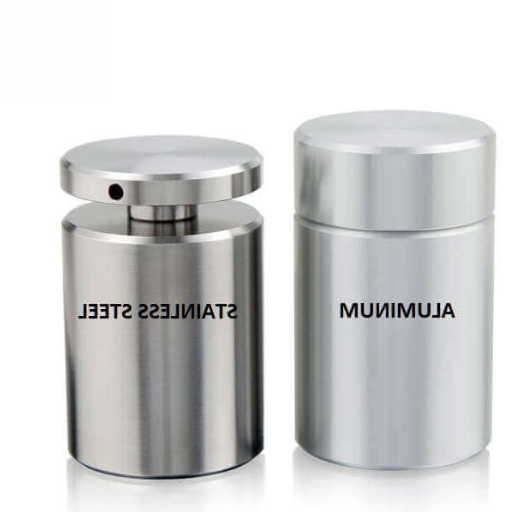
Every industry has a hierarchy of metals, and, if placed on such a hierarchy, aluminum would rank higher than steel as both malleable and flexible. Therefore, this kind of metal can be shaped, beaten, bent, or rolled without worrying that it will crack. In this respect, aluminum outperforms other metals when dealing with items needing complex and regular changes. With stainless steel, which is comparatively much stronger, steel vs aluminum is a problem because the former tends to be tough and will not bend easily, thus often necessitating specialized equipment in fabrication jobs.
Comparing Fabrication Techniques for Steel vs Aluminum
| Key Point | Steel | Aluminum |
|---|---|---|
| Malleability | Low | High |
| Machinability | Moderate | High |
| Weldability | High | Challenging |
| Cutting Ease | Harder to cut | Easier to cut |
| Forming Complexity | Limited flexibility | Easy to form complex shapes |
| Thermal Conductivity Impact | Minimal effect | Requires precision due to heat |
| Casting Suitability | Requires high temperatures | Easier to cast |
| Tool Wear | Higher tool wear | Lower tool wear |
| Surface Finishing | Polishing or coating needed | Anodizing or polishing options |
| Fabrication Cost | Generally lower | Generally higher |
Why Malleability Matters in Metal Selection
The extent to which a metal is malleable plays a vital role in deciding its appropriateness for a given use, and this is most pronounced in manufacturing industries, including construction, car building, airplane manufacturing, and even electronics. Malleability involves a metal’s ability to withstand compressive force without fracturing or tearing, which affects the relevance of using the metal in making such complex forms, patterns, or functional elements.
For instance, aluminium’s high malleability has made it the most common alloy used in the aircraft industry, where it is essential to have very light materials that can be shaped into difficult configurations. An analysis of the recent data shows that aluminum’s density approximates 2.7 g/cm3, about three times lighter than steel. Moreover, since it is less dense and malleable, the aircraft’s structure does not compromise but rather reduces the amount of fuel consumed per flight without interference with the range.
Conversely, stainless steel has a higher tensile strength of about 505MPa, whereas aluminum is always between 100- 400MPa. Therefore, stress and deformation-resistance applications prefer stainless steel vs. aluminum. Such preference makes it an important element for massive frameworks, tools, and machines that are subjected to continuous loading. Nevertheless, its greater toughness requires designing specific forming and welding mechanisms that do not rely much on experience but on engineering.
Also, banal resorts to malleable metals such as copper and aluminium have been observed in recent studies, especially in several progressive technologies, including electric vehicles and sustainable power sources. Even though copper has a high electrical conductivity, ranked among the top metals (~5.96×107 Sm), and whose ductility permits the manufacture of thin wires for power transmission, thin wires play an essential role in economic energy transmission. Similarly, aluminum is already used as a material for frame solar panels because it is easy to modify the shape according to any design layout.
Finally, most importantly, mastering malleability information is easier for engineers and even designers because they know what metals to use for what, given the variation in weight, strength, and forming capability. As a result of progress in metalworking technologies, such industries keep paving their way in the process of opting for metals to improve performance and reduce resource consumption.
Is Aluminum or Steel Better Suited for Specific Applications?
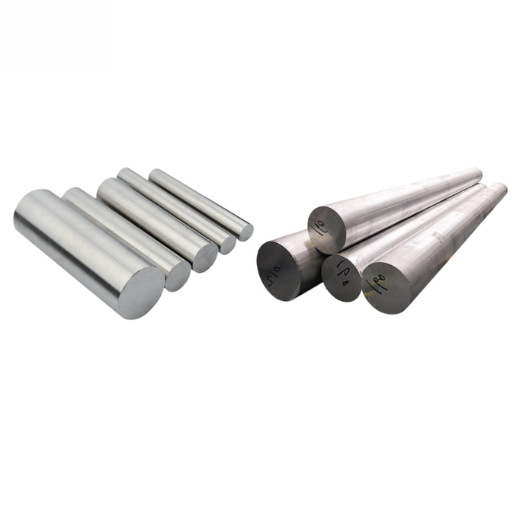
A choice between aluminum and steel in any particular application is governed by its needs.
- Generally speaking, aluminum is an option especially useful in the aerospace industry, the production of food trays and cases, or other light constructions. Due to clients’ requests, the material is also used in areas that are rainy or require decreasing the mass of the structure.
- Steel has a higher strength index than aluminum, so it will come in handy in departments or areas where structural, bridge, and other heavy engineering structures, both stationary and mobile, are required. Since much material is needed for construction work, steel is cheaper than aluminum.
Hence, the steel vs. aluminum dilemma is resolved regarding parameters like strength vs. weight vs. cost versus the environment.
When to Choose Aluminum for Its Lighter Weight
In situations where it is imperative to create the least possible weight, Aluminium fits the bill, for instance, in aero sculpting, car making, biking industries, and so on, since it is light and enhances the working properties of the equipment.
Applications Where Steel is Stronger and More Reliable
When choosing a material for the applications that demand high strength and working durability, steel is a winning bet. Using steel for constructing structures such as bridges, tall buildings, or even heavy equipment would be comforting to me since the metal can support heavy loads and resist severe weather conditions. Completing these crucial endeavors without steel is impossible because it is typically dependable to use in most high-tension cases.
Considering High Strength Needs with Aluminum Alloys
| Key Point | Aluminum Alloys |
|---|---|
| Strength-to-Weight Ratio | Excellent for lightweight applications |
| Yield Strength | Varies by alloy, up to 500 MPa |
| Tensile Strength | High in alloys like 7075 |
| Corrosion Resistance | Good with protective oxide layer |
| Heat Treatment | Enhances strength in specific alloys |
| Fatigue Resistance | Moderate, depends on alloy type |
| Weldability | Challenging for high-strength alloys |
| Applications | Aerospace, automotive, structural uses |
| Cost | Higher than standard aluminum |
| Durability | Long-lasting with proper maintenance |
How Do Alloys Impact the Performance of Steel vs Aluminum?
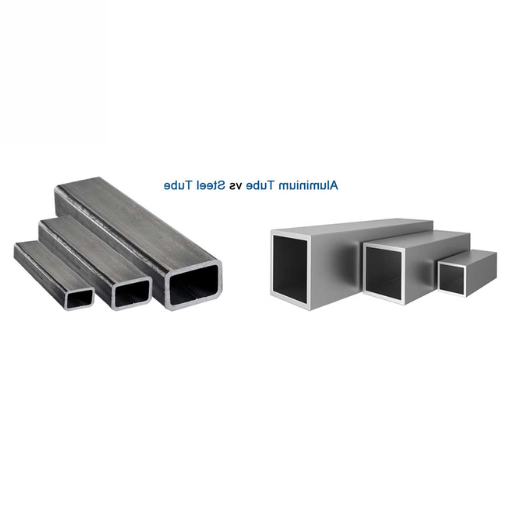
Alloys add tailored characteristics to steel and, to a lesser extent, aluminum, providing superior functional properties in a given assignment. In the case of steel, chromium and nickel are some of the alloys that enhance its strength, corrosion, and durability properties, and consequently, they are used in construction and other tools. In contrast, aluminum alloys 6061 and 7075, for example, primarily focus on increasing tensile strength and enhancing such qualities as fatigue resistance and lightweight aggregate structural members that are essential in aeronautical systems and automotive structures. Although there is a greater tendency to believe that steel alloys are usually stronger and consequently more reliable, aluminum alloys are preferred when weight saving is necessary, and a high degree of corrosion resistance is also the aim. It can therefore be seen that the changes in structural materials’ dimensions depend on the function of an object and the surrounding climate. That is why the question of steel vs aluminum doesn’t have a clear answer.
Exploring Different Types of Steel Alloys
| Key Point | Type of Steel Alloy | Characteristics |
|---|---|---|
| Carbon Steel | High carbon content | Strong, brittle, low corrosion resistance |
| Stainless Steel | Contains chromium | Corrosion-resistant, durable, shiny |
| Alloy Steel | Mixed with other metals | Enhanced strength, toughness |
| Tool Steel | High carbon, alloy elements | Hard, wear-resistant, heat-tolerant |
| High-Speed Steel | Tungsten, molybdenum alloys | Retains hardness at high temperatures |
| Low-Alloy Steel | Low alloying elements | Cost-effective, moderate strength |
| Weathering Steel | Forms protective rust layer | Ideal for outdoor use |
| Spring Steel | High yield strength | Used in springs, elastic components |
| Maraging Steel | Forms a protective rust layer | Ultra-strong, used in aerospace |
| Dual-Phase Steel | Ferrite and martensite mix | High strength, good ductility |
The Benefits of Aluminum Alloys in Modern Engineering
Modern engineering cannot be imagined without using aluminum alloys owing to their wide range of applications that rely on such unique characteristics. Here are five main reasons that make aluminum alloys a universal material, as well as facts and figures about them:
- Lightweight Property
Aluminum alloys have a density of about 2.7 g/cm³, about one-third that of steel. This may explain why they are heavily utilized in aerospace, aircraft, motor vehicles, and other industries where weight savings on fuel consumption and enhances performance.
- Resistance to corrosion
This is because aluminum alloys can form stable and non-corrosive oxide barriers that prevent corrosion. This feature is useful in saltwater applications and other areas subjected to moisture and strong weather conditions, making maintenance cheaper in the long term.
- High Strength Weight Ratio
7075 and 6061, among certain aluminum alloys, have a very high strength, which does not impose weight on the structure. Such alloys are used in high-strength structures but cannot accommodate extra weight, e.g., aircraft frames and racing bicycles.
- Machinability
Aluminum alloys can be easily designed and manufactured into complex shapes and components through cutting, casting, etc. These machining abilities reduce the time and costs involved during production, making aluminum alloys an ideal material for mass production or exact fitting.
- Sustainability
Aluminum-based alloys are easy to reclaim and reuse while maintaining quality. For every 100 kg of primary aluminum, only 5kg is needed for recycling; hence, the amount of carbon emitted to the environment during manufacturing is greatly minimized.
Such advantages could be considered one of the factors making aluminum alloys irreplaceable in contemporary engineering in terms of efficiency and carbon price.
References
- A Detailed Comparison of Various Steel Types-Stainless Steel, Structural Steel, and Aluminum Steel – This document provides an in-depth comparison of steel and aluminum in terms of usage, chemical, and mechanical properties.
- Analysis of Springback Behavior in Steel and Aluminum Sheets Using FEM – This study examines the mechanical behavior of steel and aluminum sheets, focusing on their springback properties.
- Material Substitution in Electric Vehicle Manufacturing: Comparing Advanced High Strength Steel and Aluminum – This research explores the use of advanced high-strength steel versus aluminum in electric vehicle manufacturing.
Frequently Asked Questions (FAQ)
Q: What are the key differences between aluminum vs steel?
A: The primary differences between aluminum vs steel include weight, strength, corrosion resistance, and cost. Aluminum is lighter and forms a protective oxide layer, making it more corrosion-resistant, whereas steel is denser and typically stronger, offering better strength for structural applications.
Q: How do you compare the strength-to-weight ratio of aluminum vs steel?
A: Aluminum generally has a better strength-to-weight ratio than steel, meaning it’s lighter while still providing adequate strength for various applications. However, steel or aluminum may be chosen based on the application when considering specific strength requirements.
Q: Which is stronger, stainless steel or aluminum?
A: Stainless steel is stronger than aluminum in terms of tensile strength and durability. However, aluminum is often preferred for applications where lower weight is more critical, despite being less strong than stainless steel.
Q: Is aluminum lighter than steel for construction projects?
A: Yes, aluminum is lighter than steel, which can be beneficial in construction projects where reducing the weight of structures is essential. This characteristic makes aluminum popular for applications like aircraft and automotive parts.
Q: How does corrosion resistance compare between aluminum and steel?
A: Aluminum naturally forms a protective oxide layer, highly corrosion-resistant. In contrast, carbon steel requires coatings or treatments to prevent rust, while stainless steel offers excellent corrosion resistance due to its chromium content.
Q: Can you explain the cost difference between aluminum and steel?
A: Generally, aluminum is more expensive than mild steel due to its processing costs and properties. However, when considering the longevity and weight savings, aluminum can be more cost-effective in certain applications like aerospace and transportation.
Q: In what scenarios would steel be preferred over aluminum?
A: Steel is typically preferred over aluminum in scenarios where higher tensile strength, durability, and resistance to deformation are crucial, such as in building frameworks, bridges, and heavy machinery.
Q: What are some common applications where aluminum is chosen over steel?
A: Common applications where aluminum is chosen over steel include aircraft manufacturing, automotive parts, and lightweight structures where reducing the weight of aluminum is advantageous without compromising the necessary strength.
Q: How can you tell the difference between aluminum and steel products?
A: You can tell the difference between aluminum and steel by weight, magnetic properties, and appearance. Aluminum is lighter and non-magnetic, while steel is denser and typically magnetic. Visually, aluminum often has a dull finish, whereas steel can have a shiny, metallic luster.


